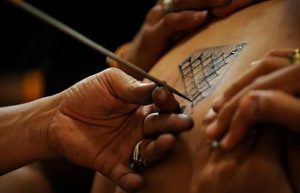 Nearly 50% of Wellington teenagers purposefully harm themselves before they turn 18. They cut burn and scratch themselves with nails, glass, sandpaper or other implements and sometimes break their own bones.
Nearly 50% of Wellington teenagers purposefully harm themselves before they turn 18. They cut burn and scratch themselves with nails, glass, sandpaper or other implements and sometimes break their own bones.
This mutilation is frightening for teachers and parents. It can be equally terrifying for teenagers who ask big life questions as a part of this process but often find themselves referred for psychological assessment because their behaviour seems incomprehensible.
Trying to understand what we call self-harm is important and new research by a team at Victoria University will be a valuable contribution. They will look for possible causes and links with depression, socio-economic status and gender.
However, we also need more soulful ways of reading the life journey. For we already know that in some other cultures, or in another time, this teenage behaviour could signify a valued rite of passage.
Ritual initiations are painful. Teeth might be knocked out; tattoos etched or cuts made repetitively across the body to form a pattern of permanent scarring. Physical endurance tests are common. All these rites take the initiate deeper and deeper into the dark space of their interior where their vulnerability lies bare.
Essential to the process is the reciting of sacred stories and mythologies, the enactment of rituals, music and prayers, all symbolising and celebrating the death of one way of being and the birth of a new and deeper way of seeing. It is the non-rational approach to understanding the soulfulness of existence.
Like teenagers, religions ask the big questions about life. Who am I? Why am I here and in the light of that, how then shall I live? The exploration of these questions needs to go on in both the material, rational world and at a deeper level of the psyche, which is involved with intuition, and a growing awareness of mystery.
Out of this human questing has come the religious rites and rituals that have traditionally helped us grow into the people we need to be. However, when we live in a culture where religion is often sidelined as something quaint or irrelevant and assumed to be a one-dimensional, rigid belief system it’s unlikely to be the first choice for exploration of teenage angst.
When religion is integrated into society and an essential part of its ebb and flow, one of its tasks is to help us work with these fundamental questions to discover who we are. To uncover our identity in relation to the environment (the Earth and the universe), the relationships we have with people and systems, and the unknown mystery we sometimes call God.
When our teenagers start marking their bodies, it may well indicate an important spiritual journey is underway. However, if we have lost the wisdom to recognize it and the language to speak of it, we will miss the signs, tending to only diagnose an illness instead of helping them into a deeper way of being.
